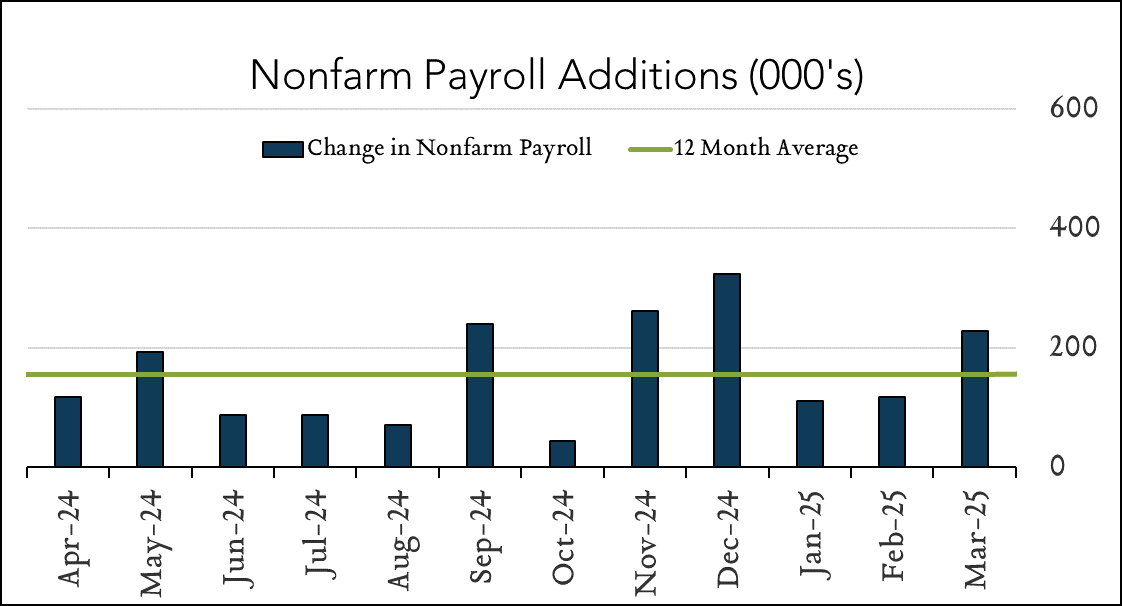April 4, 2025
March Jobs - Strong Hiring, but Tariff Impact Looms
March hiring exceeds expectations, but tariff impacts are yet to be seen. Nonfarm payrolls increased 228K in March following a (downwardly revised) gain of +117 in February. The unemployment rate ticked 0.1% higher to 4.2%. Overall, today’s report highlights a labor market that continues to appear balanced with solid hiring, defying the downbeat responses seen in business confidence surveys. The balanced labor market provides the Federal Reserve flexibility to respond to labor market and inflation developments that may arise from evolving federal trade and fiscal policy. The Fed meets next on May 7th, which will be the first meeting following the newly-announced reciprocal tariffs that have roiled asset markets. The next jobs report, for April, will be released May 2nd, before the Fed’s meeting. Investors have significantly increased their expectations of cuts. A month ago, markets were pricing 2 cuts in 2025 and 2 in 2026. After the tariff announcements, the market is now pricing in 4 cuts in 2025 and 2 in 2026.
· 228k jobs added in March – above expectations. The U.S. labor market added 228k jobs in March compared to expectations for +140K. February job gains were revised downward to +117K from +151K originally reported. Above expectations, March’s outcome reflects solid job growth and perhaps a little acceleration in hiring compared with average gains +158K over the last 12 months. Federal government employment declined by 4K in March, following a loss of 11K jobs in February, an area to watch as the new administration prioritizes cutting Federal spending.
· 4.2% unemployment – up from 4.1% in February. The U.S. unemployment rate ticked 0.1% higher in March to 4.2% – up from 4.1% in February. The unemployment rate has remained in a narrow range of 4.0% to 4.2% since May 2024. The labor force participation rate rose 0.1% to 62.5%. Wage growth ticked slightly lower to 3.8% year-over-year and was stable at +0.3% month-over-month. All data points to a balance between labor supply and labor demand.



